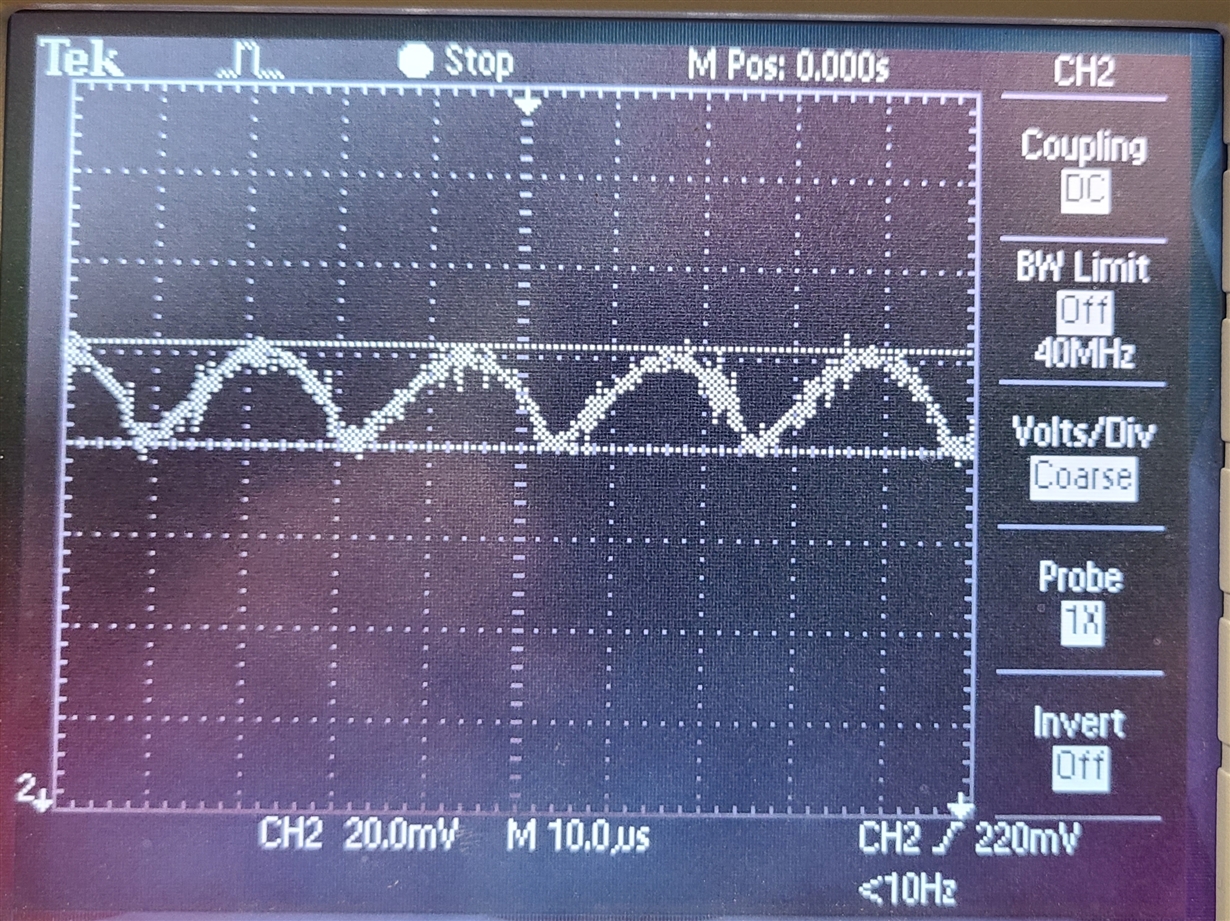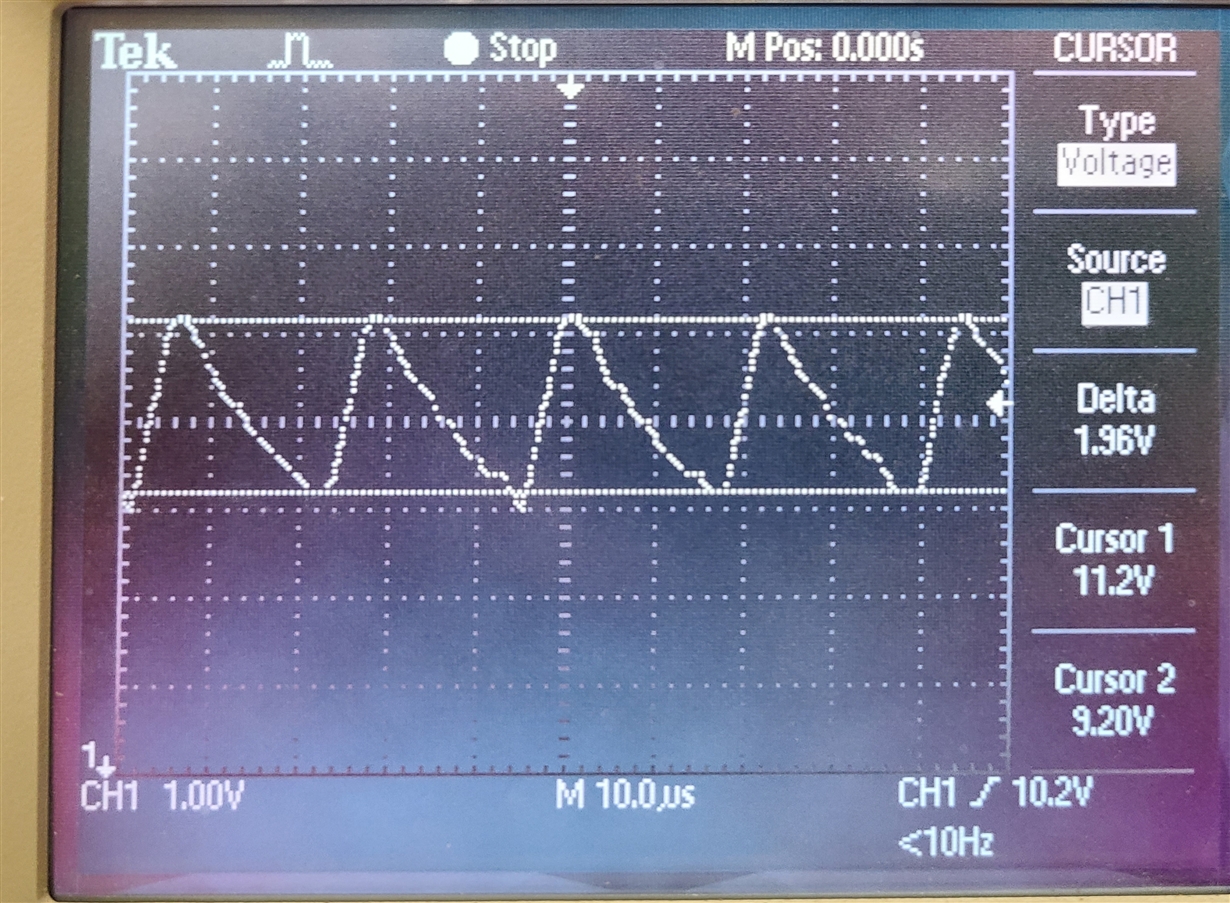Other Parts Discussed in Thread: INA114, , XTR111
I have designed a 4-20mA Current-Loop Transmitter very similar to the one shown in the Burr-Brown Application Bulletin titled "USE LOW-IMPEDANCE BRIDGES ON 4-20mA CURRENT LOOPS" (AB-043). I have selected the Microchip Technology VP0808L-G (TO92-3 package) for the external PMOS transistor.
When running tests at 0-V differential voltage (into the INA114), I am observing considerable noise on the output signal (out of the drain of the PMOS)... When it is supposed to be 4mA, I am observing noise/ripple of 2mA pk-pk (centered at about 4mA) at a frequency of about 45kHz. The waveform of the noise is that the current/voltage spikes low (to about 3mA) and then high (to about 5mA) before settling around 4mA.
I am not sure how to try to remove this unwanted noise. Is this noise coming from the switching (does it switch?) of the PMOS? I'm pretty experienced with switched-mode power supplies, but I don't know if there's anything I can do for a current-based source.
Would you be able to provide me with any assistance here?







